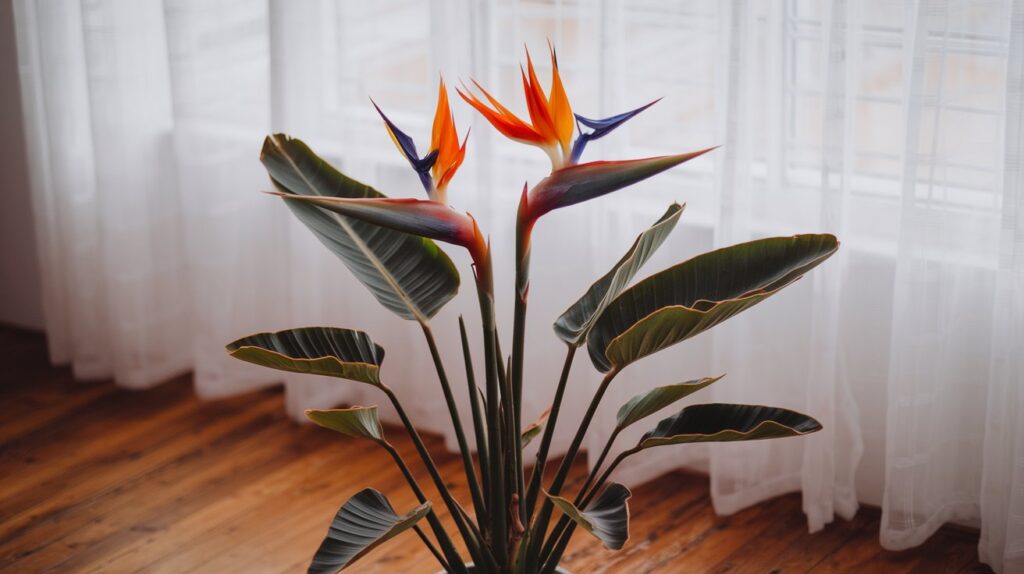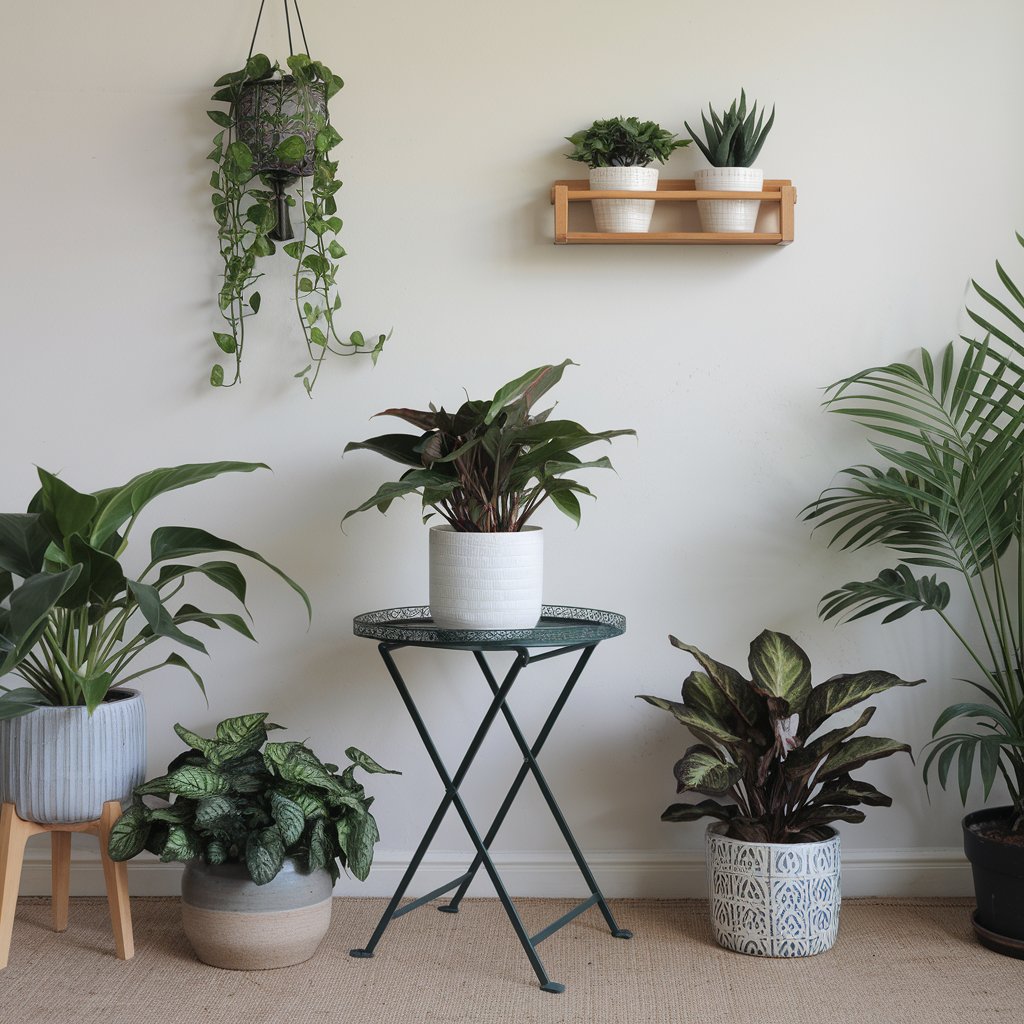The Bird of Paradise plant (Strelitzia spp.) is a stunning indoor plant known for its striking foliage and tropical flair. Often called the “queen of houseplants,” this vibrant species can turn any indoor space into a lush oasis. Whether you’re drawn to the dramatic leaves or its promise of bold blooms, this plant is a must-have for plant lovers.
This guide will walk you through everything you need to know about growing and maintaining the Bird of Paradise plant indoors, highlighting popular varieties like the White Bird of Paradise and the Mexican Bird of Paradise. Let’s dive into the care, benefits, and common challenges of this botanical gem.
Why Choose the Bird of Paradise Plant?
The Bird of Paradise plant is admired for its large, banana-like leaves and its ability to thrive indoors with proper care. While its exotic flowers resemble the head of a bird (hence the name), it’s equally stunning even without blooms. This plant is a showstopper, capable of enhancing your home’s aesthetic while contributing to cleaner air.
Popular Bird of Paradise Plant Varieties
1. White Bird of Paradise (Strelitzia nicolai)
- Features large, elegant leaves and white flowers with a blue center.
- Grows taller than other varieties, making it perfect for larger spaces.
- Known for its resemblance to a giant banana tree.
2. Mexican Bird of Paradise (Caesalpinia mexicana)
- A shrub-like variety with bright yellow blooms.
- Often grown outdoors but can adapt to indoor conditions with proper care.
3. Orange Bird of Paradise (Strelitzia reginae)
- The classic variety with orange and blue flowers resembling a bird’s plumage.
- Compact and manageable, making it ideal for smaller spaces.
4. Giant Bird of Paradise
- A towering version of the White Bird of Paradise that can grow up to 20 feet tall.
- Better suited for large, high-ceilinged spaces.
5. Red Bird of Paradise (Caesalpinia pulcherrima)
- Features vibrant red and orange flowers.
- Thrives outdoors but can be grown indoors with extra attention to light.
Choosing the Right Spot for Your Bird of Paradise Plant
The Bird of Paradise plant loves bright, indirect light and even tolerates some direct sunlight. Here’s how to create the perfect environment for your plant:
- Position the plant near a south-facing window to provide it with ample light.
- Avoid drafts or sudden temperature changes, which can damage the leaves.
- Ensure plenty of vertical space, as this plant can grow tall indoors.
Tips for Nurturing a Bird of Paradise Indoors.
1. Light Requirements
Bird of Paradise plants flourish in bright, indirect light for optimal growth. For optimal growth:
- Provide at least 6 hours of light daily.
- Supplement with a grow light if sufficient natural light isn’t available.
2. Watering Needs
Consistency is key when watering your Bird of Paradise plant.
- Maintain evenly moist soil during active growth seasons like spring and summer.
- Allow the top inch of soil to dry out before watering in fall and winter.
- Prevent root rot by being cautious not to overwater the plant.
3. Temperature and Humidity
This tropical plant thrives in warm, humid conditions.
- Maintain temperatures between 65-80°F.
- Boost humidity by misting the foliage or setting up a nearby humidifier.
4. Soil and Potting
- Use a well-draining potting mix, such as a blend of peat, sand, and perlite.
- Repot every 2-3 years to accommodate growth.
5. Fertilizer
Feed your Bird of Paradise with a balanced fertilizer every 4-6 weeks during the growing season. Pause fertilization during winter when the plant’s growth naturally decreases.

Common Issues and Solutions
1. Bird of Paradise Leaves Curling
- Cause: Underwatering, low humidity, or pests.
- Solution: Adjust your watering routine and mist the leaves to increase humidity. Inspect for pests like spider mites or mealybugs.
2. Yellowing Leaves
- Cause: Overwatering or poor drainage.
- Solution: Check the soil and ensure the pot has drainage holes. Adjust watering frequency.
3. Lack of Blooms
- Cause: Insufficient light or nutrients.
- Solution: Move the plant to a brighter location and fertilize regularly during its growing season.
Benefits of the Bird of Paradise Plant
- Air Purification: Helps improve indoor air quality by removing toxins.
- Aesthetic Appeal: Instantly elevates the look of any room with its tropical vibe.
- Stress Reduction: Greenery is known to boost mood and reduce stress.
Decorating with the Bird of Paradise Plant
The Bird of Paradise plant is a versatile decor element that can enhance any space:
- Living Rooms: Place it in a decorative pot to make it the focal point of the room.
- Bedrooms: Add it near a window for a calming, natural touch.
- Home Offices: Use it to create a refreshing, productive workspace.
Pair it with other tropical plants like Monstera or Calathea for a lush, cohesive look.
Bird of Paradise Plant FAQs
1. How Long Does It Take for a Bird of Paradise to Bloom Indoors?
It can take 3-5 years for a Bird of Paradise to bloom indoors. Proper lighting, care, and patience are essential.
2. Are Bird of Paradise Plants Toxic to Pets?
Yes, Bird of Paradise plants are toxic to cats and dogs if ingested. Keep them out of reach of pets.
3. Can I Grow Bird of Paradise Plants from Seeds?
Yes, but it requires patience. Soak the seeds in warm water for 24-48 hours before planting in a seed-starting mix. Germination can take several weeks to months.
The Allure of White Bird of Paradise
The White Bird of Paradise plant is particularly popular for its elegant, architectural look. Its large, paddle-shaped leaves make it a stunning choice for those seeking a minimalist yet bold indoor plant. The White Bird of Paradise flower is a rare but spectacular sight indoors, adding to the plant’s allure.
Conclusion
The Bird of Paradise plant is a captivating addition to any indoor garden, offering both beauty and a tropical ambiance. With varieties like the White Bird of Paradise and the Mexican Bird of Paradise, there’s a perfect option for every space. By following proper care tips and addressing common challenges, you can enjoy this stunning plant as a long-lasting centerpiece in your home.
Whether you’re a seasoned plant enthusiast or new to indoor gardening, the Bird of Paradise plant is a rewarding choice that brings life and vibrancy to your space. Embrace its tropical charm and let it transform your home into a personal paradise!
For more tips on indoor plant care and propagation, check out Indoor gardening.




